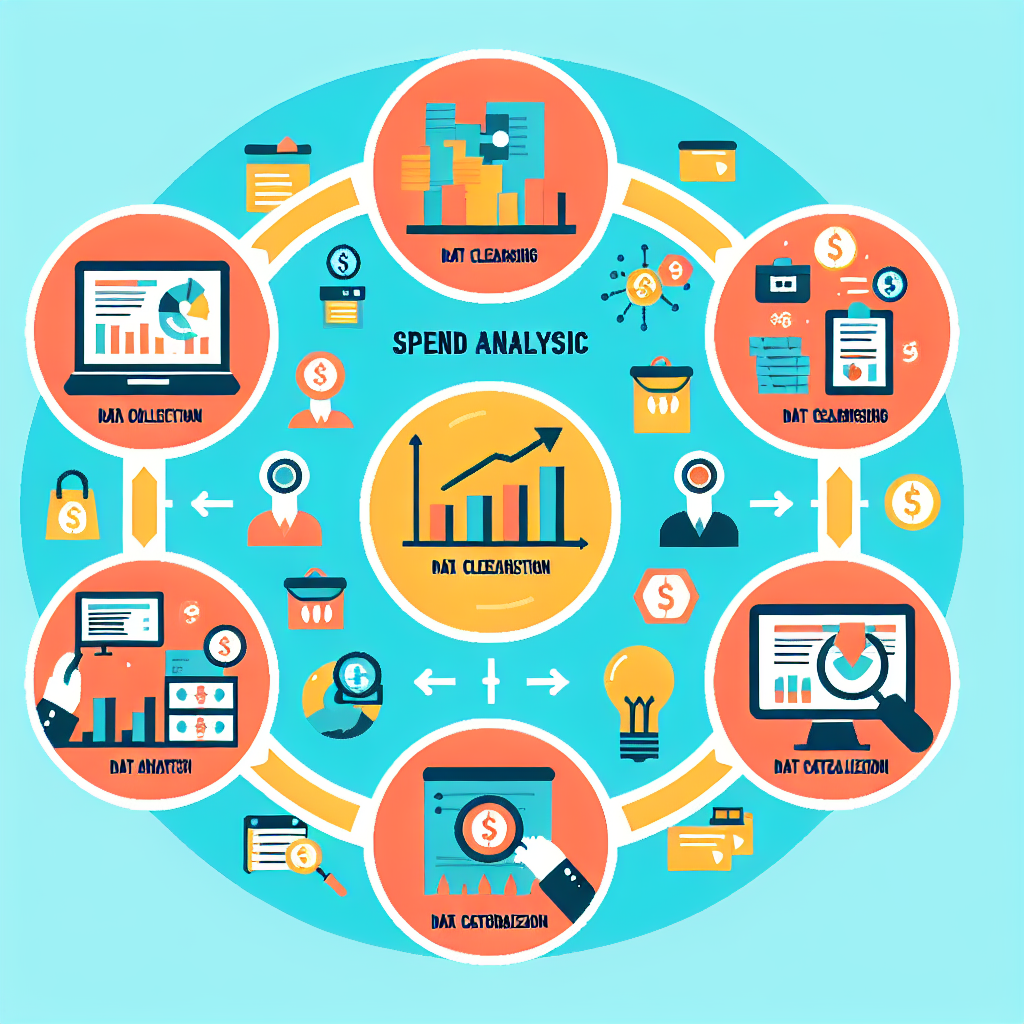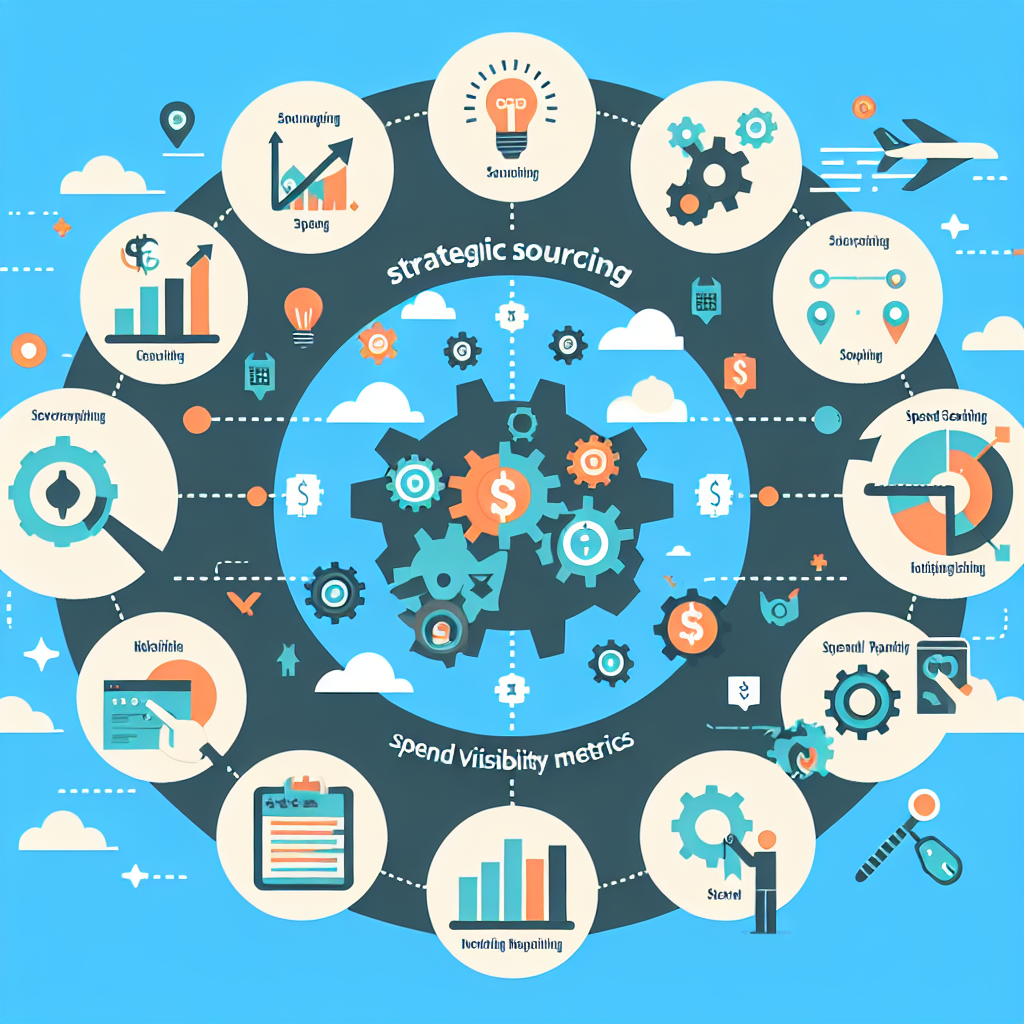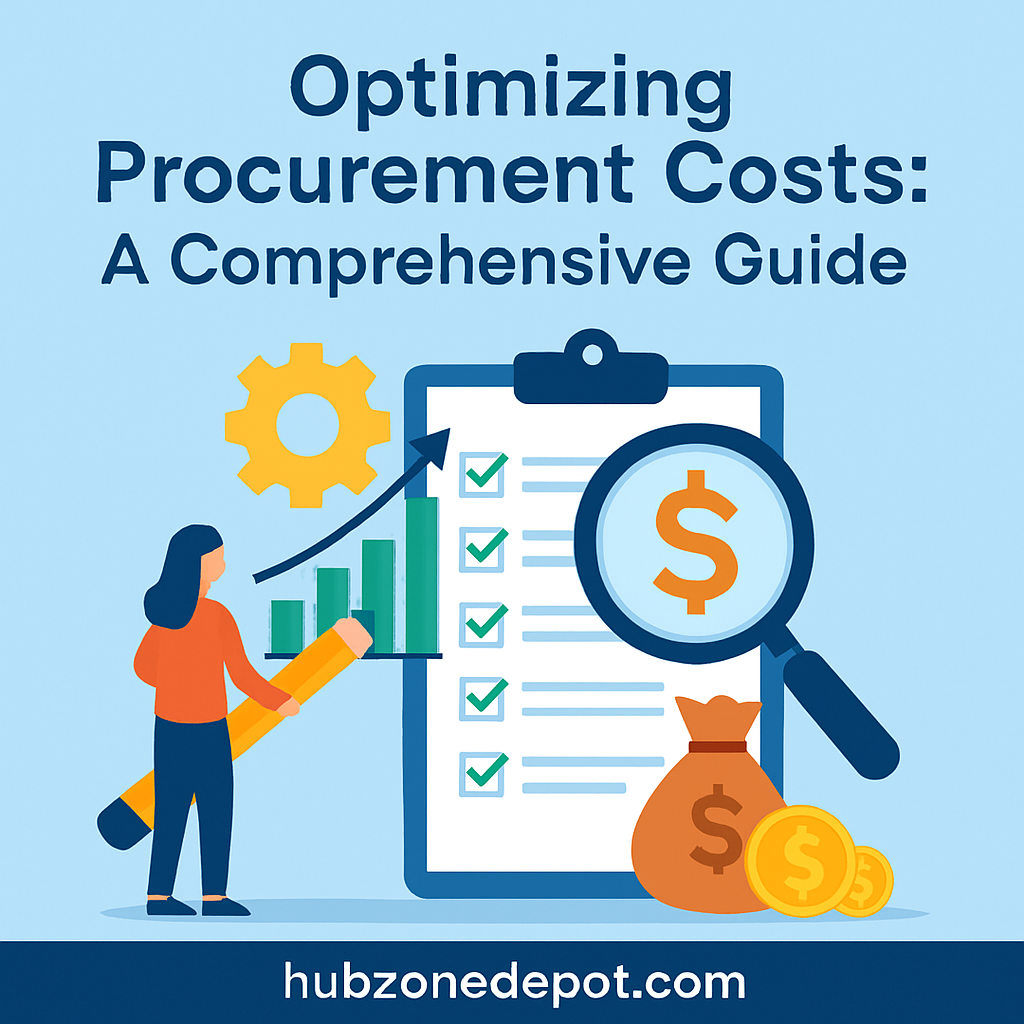Leveraging Spend Analysis for Strategic Procurement Decisions
Introduction
Welcome to the world of spend analysis in procurement, where data meets decision-making! Imagine trying to navigate a treasure map without knowing where X marks the spot. That’s what procurement professionals face without effective spend analysis. It’s not just about crunching numbers; it’s about uncovering insights that can lead to strategic sourcing decisions, cost savings, and enhanced supplier relationships.
In today’s fast-paced business environment, understanding your procurement spend analysis is akin to having a GPS for your purchasing journey. It helps you identify where your money goes, how to optimize it, and ultimately, how to boost your bottom line. With the right tools and processes in place, you can transform raw spend data into actionable insights that drive procurement performance analysis.
This blog post will guide you through the intricacies of the spend analysis process, illustrating how it can lead to significant improvements in procurement efficiency. We’ll explore how effective spend management in procurement doesn’t just save money it also enhances strategic decision-making and supplier performance evaluation.
Key Takeaway: Embracing a data-driven approach through spend analysis can drastically improve your procurement optimization strategies. Are you ready to unlock the potential of your spending?

Understanding Spend Analysis in Procurement
Spend analysis in procurement is like putting on a pair of glasses after a lifetime of squinting. Suddenly, everything is clear, and you’re able to see the fine details that were previously hidden in the fog of data.
At its core, spend analysis involves examining an organization’s spending habits to identify trends, inefficiencies, and opportunities for improvement. This process is crucial for any purchasing director or CFO looking to optimize their procurement strategies.
Key Benefits: Spend analysis can lead to significant cost savings, improved supplier relationships, and enhanced procurement efficiency.
Importance of Spend Analysis in Procurement
The significance of spend analysis in procurement cannot be overstated. It serves as the foundation upon which effective spend management strategies are built. By leveraging procurement analytics, organizations can:
- Identify cost-saving opportunities: Uncovering areas where spending can be reduced without sacrificing quality.
- Enhance supplier performance evaluation: Understanding which suppliers provide the best value and performance.
- Improve overall procurement performance: Streamlining processes to achieve greater efficiency.
Key Components of Effective Spend Analysis
A successful spend analysis process hinges on several key components:
- Data Collection: Gathering accurate and comprehensive spend data from various sources within the organization.
- Data Cleansing: Ensuring that the data is free from errors and inconsistencies think of it as tidying up your digital closet before you can find what you need!
- Spend Categorization: Classifying expenditures into meaningful categories (like office supplies vs. IT services) to facilitate deeper insights.
- Analysis and Reporting: Using analytical tools to extract actionable insights from the data this is where the magic happens!
The spend analysis process not only helps organizations understand their current financial landscape but also informs future strategic sourcing decisions. With proper spend visibility, companies can make data-driven decisions that lead to substantial cost reductions and improved supplier relationships.
The Spend Analysis Process
Welcome to the thrilling world of spend analysis in procurement, where data transforms into actionable insights that can propel your organization to new heights! Buckle up as we dive into the spend analysis process, a crucial journey for any purchasing director or CFO aiming to maximize procurement efficiency.
1. Data Collection Methods
The first step in our adventure is data collection. Think of this as gathering all the ingredients before baking a cake. You wouldn’t want to start without flour or sugar, right? In procurement, you need comprehensive data on:
- Purchasing transactions
- Supplier invoices
- Contract terms and conditions
- Market prices
Utilizing various channels such as ERP systems, e-procurement tools, and even good old-fashioned spreadsheets can help you capture this vital information.
2. Data Cleansing and Categorization
No one likes a messy kitchen, and the same goes for your spend data! Once you’ve collected your data, it’s time for some spring cleaning:
- Cleansing: Remove duplicates, correct errors, and ensure consistency.
- Categorization: Organize spend into categories that make sense for your organization think office supplies versus IT services.
This step is crucial because accurate categorization lays the foundation for insightful analysis. If you categorize office chairs with IT equipment, you might end up with some very confused analytics!
3. Analyzing Spend Data for Insights
Now comes the fun part analyzing the cleansed data! This is where you can uncover hidden gems that lead to cost savings in procurement. By employing techniques like:
- Spend visibility: Identify where your money is going.
- Supplier spend analysis: Assess supplier performance and pricing trends.
- Category management in procurement: Optimize purchasing strategies based on categories.
The insights gained from this analysis not only inform strategic sourcing decisions but also enhance overall procurement performance analysis. Remember: knowledge is power!

Benefits of Procurement Spend Analysis
When it comes to spend analysis in procurement, the benefits are as rich and varied as a gourmet buffet. Let’s dig into the delicious details!
Cost Savings in Procurement
First off, who doesn’t want to save some cash? By leveraging procurement spend analysis, organizations can identify areas where they are overspending. This means finding those sneaky purchases that are eating away at the budget, allowing for significant cost savings in procurement. For example, a company may realize they’re paying premium prices for office supplies when bulk purchasing could save them up to 20%!
Improved Supplier Relationship Management Analytics
Next up, let’s talk about relationships. No, not the romantic kind we’re diving into supplier relationships! Effective spend analysis provides insights into supplier performance through comprehensive supplier spend analysis. This data allows businesses to evaluate which suppliers are hitting the mark and which ones might need a little nudge (or a complete breakup). By analyzing payment terms, delivery times, and quality metrics, procurement teams can foster stronger partnerships that lead to better deals.
Enhanced Procurement Efficiency Improvement Strategies
Now let’s get efficient! The beauty of a solid spend analysis process is that it helps streamline operations. With clear visibility into spending patterns, companies can optimize their purchasing strategies and reduce waste. Think of it as cleaning out your closet once you see what you have (and don’t need), you can make smarter decisions moving forward. This leads to improved procurement efficiency improvement strategies that not only save time but also enhance overall productivity.
Key Takeaway: Procurement spend analysis is not just a tool; it’s your strategic ally in uncovering savings, enhancing supplier relationships, and driving efficiency!
The Power of Data-Driven Procurement Strategies
In today’s data-driven world, relying on gut feelings is so last season. Instead, companies should embrace robust procurement analytics that turn raw data into actionable insights. By categorizing spending accurately through effective spend categorization, organizations can make informed decisions that align with their financial goals.
Avoiding Common Pitfalls
While diving into the benefits of procurement spend analysis is exciting, it’s crucial to avoid common pitfalls. Many organizations fail to regularly update their spend data or neglect the importance of continuous monitoring. Remember: stale data is like expired milk it won’t do you any good! Regular audits and updates ensure that insights remain relevant and actionable.
In summary, embracing procurement spend analysis opens doors to substantial cost savings, stronger supplier relationships, and enhanced efficiency. It’s time for purchasing directors and CFOs to leverage this powerful tool for strategic decision-making!
Strategic Sourcing and Spend Visibility
In the world of procurement, strategic sourcing is like having a secret weapon in your back pocket. It’s not just about finding the lowest price; it’s about making informed decisions that align with your organization’s goals. When you integrate spend analysis in procurement into your strategic sourcing efforts, you unlock a treasure trove of insights that can drive significant cost savings and improve overall efficiency.
The Role of Strategic Sourcing in Procurement Optimization Strategies
Strategic sourcing is the art and science of analyzing an organization’s spend data to find opportunities for cost reduction and supplier consolidation. By applying procurement spend analysis, organizations can:
- Identify key suppliers: Understanding who your top suppliers are helps in negotiating better terms.
- Consolidate purchases: By grouping similar purchases, companies can leverage volume discounts.
- Enhance supplier relationships: Knowing which vendors provide the best value fosters stronger partnerships.
Achieving Spend Visibility for Informed Decision-Making
Spend visibility is more than just a buzzword; it’s crucial for making informed procurement decisions. It involves having clear insights into where every dollar is spent across all categories. This visibility allows procurement teams to:
- Dive deep into spend data analysis: Identify unnecessary expenditures and areas ripe for negotiation.
- Create effective category management strategies: Tailor sourcing strategies based on specific category needs.
- Monitor purchasing trends: Stay ahead of market changes and adjust strategies accordingly.
Purchasing Trends and Insights from Spend Analysis Data
The beauty of conducting a thorough purchasing spend analysis lies in its ability to reveal trends that might otherwise go unnoticed. For instance, by analyzing historical spend data, organizations can uncover patterns such as seasonal fluctuations in demand or shifts towards sustainable products. These insights can inform future buying decisions, ensuring alignment with both operational needs and corporate social responsibility goals.
Key Takeaway: Integrating strategic sourcing with robust spend visibility not only enhances procurement efficiency but also positions organizations to capitalize on emerging trends for long-term success.

Procurement Analytics Tools and Solutions
In the world of spend analysis in procurement, having the right tools can feel like having a secret weapon. Imagine trying to assemble IKEA furniture without the instructions frustrating, right? That’s what it’s like navigating procurement without effective analytics solutions. Let’s dive into some must-have tools and strategies that can transform your procurement spend analysis.
E-Procurement Tools for Spend Analysis
E-procurement tools are like GPS for your spending journey. They help you track, manage, and analyze purchasing data in real-time. With features that allow for comprehensive spend visibility, these tools help you identify opportunities for cost savings and efficiency improvements.
- Automation: Streamlines the entire procurement process from requisition to payment.
- Data Integration: Combines data from various sources, providing a holistic view of spending.
- User-Friendly Interfaces: Makes it easier for teams to adopt and utilize effectively.
Purchasing Analytics Solutions Overview
These solutions are designed specifically to enhance your purchasing spend analysis. Think of them as your personal analytics assistant, sifting through mountains of data to uncover actionable insights. Here’s what they bring to the table:
- Spend Categorization: Automatically categorizes expenses, making it easier to identify trends and areas for improvement.
- Supplier Analysis: Evaluates supplier performance with metrics that matter, helping you make informed decisions.
- Cost Savings Tracking: Measures savings achieved through strategic sourcing initiatives and other procurement optimization strategies.
Procurement Intelligence Solutions for Enhanced Data-Driven Strategies
If you want to elevate your procurement game, investing in procurement intelligence solutions is key. These platforms aggregate data across your supply chain and provide deep insights into purchasing trends and patterns. Here’s how they can supercharge your strategic sourcing efforts:
- Advanced Analytics: Leverage AI-driven insights for smarter decision-making.
- Total Cost of Ownership Analysis: Helps evaluate long-term costs associated with suppliers beyond just price tags.
- Real-Time Reporting: Keeps you updated on spending patterns as they happen, allowing agile responses to market changes.
Key Takeaway: The right procurement analytics tools not only enhance spend management in procurement but also empower organizations with data-driven strategies that lead to significant cost savings and improved efficiency.
The landscape of procurement is evolving rapidly. By leveraging these cutting-edge analytics tools, you’ll not only keep pace but also drive forward-thinking initiatives that can redefine success within your organization. So gear up it’s time to embrace the power of procurement analytics!
Supplier Performance Evaluation and Cost-Benefit Analysis in Procurement
When it comes to spend analysis in procurement, understanding supplier performance is like having a cheat sheet for your procurement exams. You want to know not just who delivers the goods, but how well they do it. This is where supplier performance evaluation through analytics comes into play.
Conducting Supplier Performance Evaluations through Analytics
Supplier performance evaluation isn’t just about checking boxes; it’s about diving deep into the numbers. By leveraging procurement analytics, you can assess key performance indicators (KPIs) such as:
- Delivery times
- Quality of goods or services
- Cost efficiency
- Responsiveness to issues
- Compliance with contractual terms
This data-driven approach allows you to identify your star suppliers and those who might need a little extra coaching. Think of it as a sports team where you want to keep your MVPs while also working on the benchwarmers.
The Importance of Cost-Benefit Analysis in Procurement Decisions
No procurement strategy is complete without a robust cost-benefit analysis. This is where you weigh the pros and cons like deciding whether to splurge on that artisanal coffee or stick with the office brew. In procurement, this translates to:
- Assessing Total Costs: Not just the sticker price but all associated costs including maintenance, shipping, and potential downtime.
- Evaluating Long-Term Value: Sometimes paying a bit more upfront can lead to greater savings down the line think high-quality tools that last versus cheap ones that break after one use.
- Risk Management: Understanding potential risks associated with suppliers can save headaches later; it’s like knowing which friends are reliable when planning a road trip.
Key Takeaway: Combining supplier performance evaluations with cost-benefit analysis empowers procurement professionals to make informed decisions that align with organizational goals and drive cost savings in procurement.
The integration of these evaluations into your overall spend management strategy enhances visibility across your supply chain, allowing for more strategic sourcing decisions. It’s like having GPS for navigating the often winding roads of procurement keeping you on track towards optimal results!

Total Cost of Ownership in Procurement Analysis
When it comes to procurement, the Total Cost of Ownership (TCO) is like the hidden villain in a superhero movie often overlooked but crucial to understanding the full picture. TCO goes beyond just the sticker price; it encompasses all costs associated with purchasing a product or service over its entire lifecycle. This includes acquisition costs, operational expenses, maintenance, and even disposal costs.
- Understanding TCO Principles: Grasping the full scope of TCO helps procurement professionals make more informed decisions. It’s not just about finding the cheapest option; it’s about finding value.
- Applying TCO to Procurement Strategies: Integrating TCO into your procurement strategy can lead to smarter sourcing decisions. For instance, a seemingly expensive supplier might offer lower operational costs or better reliability, ultimately saving you money in the long run.
- Impact on Long-Term Financial Planning and Supplier Selection: By considering TCO, organizations can align their supplier selection with long-term financial goals. Choosing vendors who prioritize sustainability or efficiency can yield significant cost savings over time.
Key Takeaway: Implementing TCO analysis in your spend analysis process provides deeper insights into procurement spend analysis and enhances overall procurement performance analysis.
However, many organizations fall into the trap of focusing solely on initial costs. This is akin to buying a flashy sports car without considering fuel efficiency or insurance premiums. Remember, while low upfront costs are tempting, they may lead to higher expenses later on.
A practical example of this is in technology purchases. A cheaper software solution may have lower upfront licensing fees but could incur hefty maintenance and training costs down the line. By applying TCO principles in purchasing spend analysis, companies can uncover these hidden expenses and make more strategic sourcing decisions.
- < li >Understanding total cost of ownership (TCO) principles
- Applying TCO to procurement strategies
- Impact on long-term financial planning and supplier selection
< h2 >Conclusion< / h2 >



